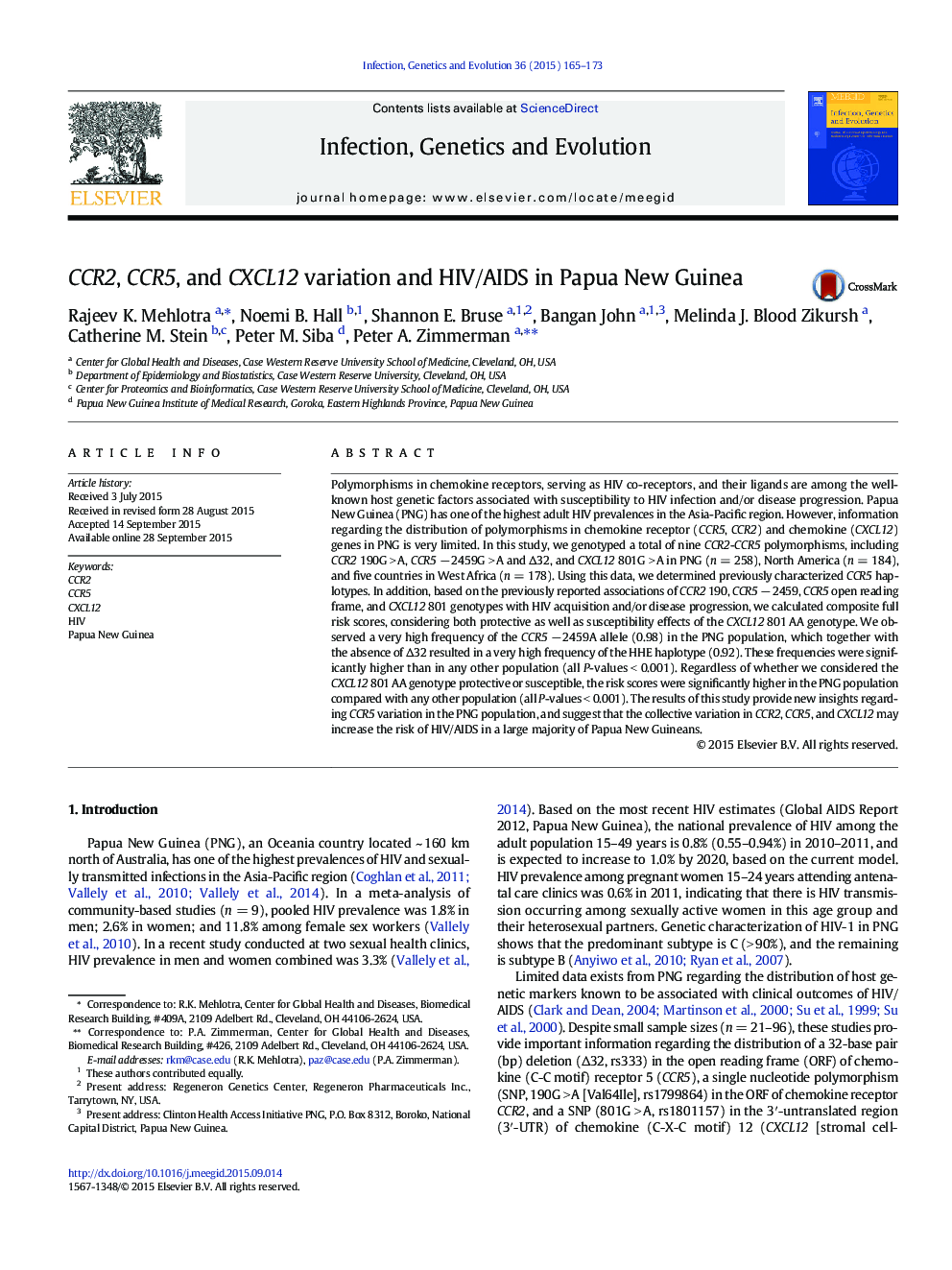| Article ID | Journal | Published Year | Pages | File Type |
|---|---|---|---|---|
| 5908544 | Infection, Genetics and Evolution | 2015 | 9 Pages |
â¢PNG has one of the highest adult HIV prevalences in the Asia-Pacific region.â¢Information regarding human genetic variation related to HIV/AIDS is limited in PNG.â¢No information is available regarding genetic associations of HIV/AIDS in PNG.â¢HIV/AIDS-associated CCR5 â 2459A allele and HHE haplotype frequencies are > 0.9 in PNG.â¢Variation in CCR2-CCR5-CXCL12 may increase the risk of HIV/AIDS in PNG.
Polymorphisms in chemokine receptors, serving as HIV co-receptors, and their ligands are among the well-known host genetic factors associated with susceptibility to HIV infection and/or disease progression. Papua New Guinea (PNG) has one of the highest adult HIV prevalences in the Asia-Pacific region. However, information regarding the distribution of polymorphisms in chemokine receptor (CCR5, CCR2) and chemokine (CXCL12) genes in PNG is very limited. In this study, we genotyped a total of nine CCR2-CCR5 polymorphisms, including CCR2 190G > A, CCR5 â 2459G > A and Î32, and CXCL12 801G > A in PNG (n = 258), North America (n = 184), and five countries in West Africa (n = 178). Using this data, we determined previously characterized CCR5 haplotypes. In addition, based on the previously reported associations of CCR2 190, CCR5 â 2459, CCR5 open reading frame, and CXCL12 801 genotypes with HIV acquisition and/or disease progression, we calculated composite full risk scores, considering both protective as well as susceptibility effects of the CXCL12 801 AA genotype. We observed a very high frequency of the CCR5 â 2459A allele (0.98) in the PNG population, which together with the absence of Î32 resulted in a very high frequency of the HHE haplotype (0.92). These frequencies were significantly higher than in any other population (all P-values < 0.001). Regardless of whether we considered the CXCL12 801 AA genotype protective or susceptible, the risk scores were significantly higher in the PNG population compared with any other population (all P-values < 0.001). The results of this study provide new insights regarding CCR5 variation in the PNG population, and suggest that the collective variation in CCR2, CCR5, and CXCL12 may increase the risk of HIV/AIDS in a large majority of Papua New Guineans.
